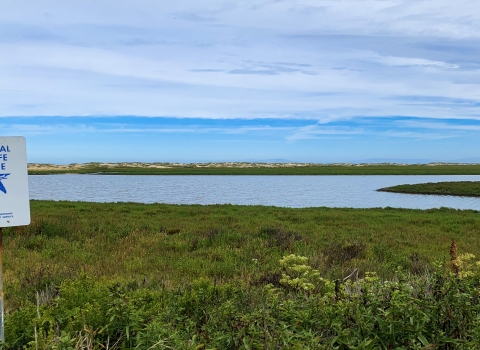Like many other islands in the Caribbean, the history of St. Croix in the U.S. Virgin Islands is inextricably bound up with the planting and harvesting of sugarcane. Decades of land clearing for sugar, as well as cotton and livestock, denuded the U.S. Virgin Islands of more than 90 percent of their native vegetation.
St. Croix agave (also called Egger’s century plant) and tropical lily-thorn are but two of the many plants that once flourished in the subtropical dry forests of St. Croix, but that neared extinction due to degradation of their habitats. Today, only pockets of the two plants remain, but because the lily-thorn was listed as endangered in 1999 and the agave in 2014 under the Endangered Species Act, they are both making a comeback.
The attractive, spikey agave plant can grow more than 20 feet high; one factor that may have helped in its survival is its use in private landscaping, but it still struggles for a foothold in the wild. The lily-thorn is a rare flowering plant in the coffee family.
The U.S. Fish and Wildlife Service’s Partners for Fish and Wildlife Program promotes conservation efforts and the recovery of threatened and endangered species throughout the United States, including territories such as the U.S. Virgin Islands. For these two plants, propagation may be the answer.
Since 2014, the Partners program has collaborated with Sandy Point National Wildlife Refuge, the National Park Service, St. Croix Environmental Association, the University of the Virgin Islands, Geographic Consulting, The Nature Conservancy and the Virgin Islands Department of Planning and Natural Resources (Division of Fish and Wildlife) to protect the St. Croix agave and the tropical lily-thorn on St. Croix.
Currently, the Service and partners are supporting two propagation projects, one for each species. Establishing new self-propagating populations of each species at acts like an insurance policy for existing wild populations. The Service’s Coastal Program, in contributing to propagation and enhancing habitat, has also enlisted public protected lands for the benefit of both species. Synergy between the two programs increases reintroduction possibilities across the island and increases the connectivity between private and public lands.
Several hundred St. Croix agave plants are at home in a greenhouse at Sandy Point Wildlife Refuge. The Botanical Garden of the Virgin Islands has been contracted to propagate the more challenging lily-thorn. Once they are ready to leave the nursery, seedlings of both species will be planted in protected areas at Sandy Point National Wildlife Refuge, Salt River Bay National Historic Park and Ecological Preserve, Southgate Coastal Reserve, and on private lands.
Identifying private landowners that are willing to dedicate some space on their land for the recovery of these species is critical to the success of these projects.



